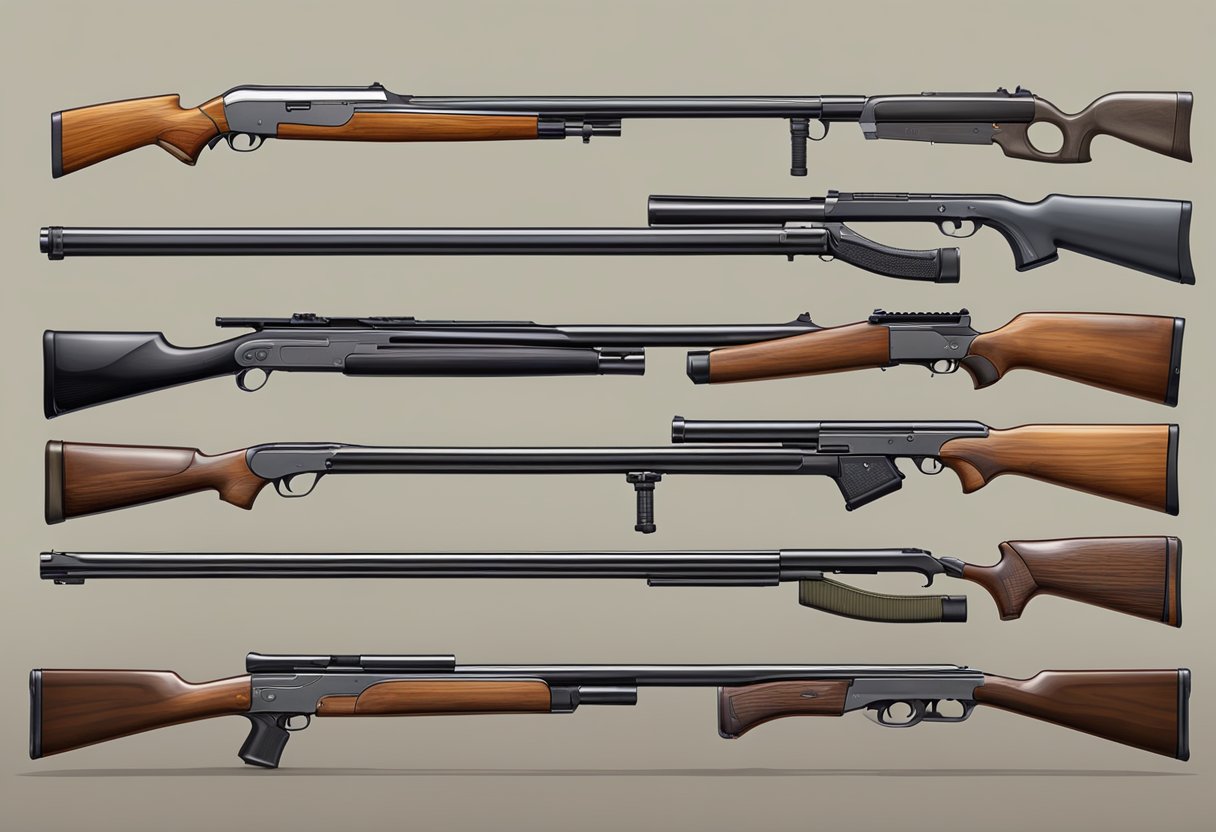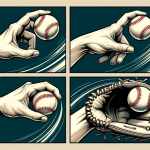Types Of Shotguns
Shotguns are a type of firearm that have been in use for centuries. They are versatile weapons that can be used for a variety of purposes, from hunting to self-defense. Shotguns are known for their unique design, which features a smooth bore and a wide range of ammunition options.
Shotguns come in a variety of types, each with its own unique features and benefits. Some of the most common types of shotguns include single-shot, double-barrel, pump-action, and semi-automatic. Each type of shotgun has its own advantages and disadvantages, depending on the intended use and the shooter’s preferences. For example, a single-shot shotgun may be ideal for hunting small game, while a pump-action shotgun may be better suited for home defense.
Understanding the different types of shotguns and their uses is essential for anyone who is interested in owning or using a shotgun. In this article, we will explore the various types of shotguns, their features and benefits, and how to select the right shotgun for your needs. We will also cover important topics such as ammunition and loading, maintenance and safety, and more.
Key Takeaways
- Shotguns are versatile firearms that can be used for a variety of purposes, from hunting to self-defense.
- There are several types of shotguns, each with its own unique features and benefits, including single-shot, double-barrel, pump-action, and semi-automatic.
- Understanding the different types of shotguns and their uses is essential for selecting the right shotgun for your needs.
Shotgun Basics

When it comes to shotguns, there are a few basic things to understand. Below are some of the key aspects to consider when selecting a shotgun.
Gauge and Caliber
The gauge of a shotgun refers to the diameter of the bore. The most common gauges are 12, 20, and .410 bore. The larger the gauge number, the smaller the diameter of the bore. Shotguns are also available in different calibers, which refer to the size of the ammunition used. The most common shotgun caliber is 12 gauge, followed by 20 gauge.
Action Types
Shotguns come in different action types, which determine how the gun is loaded and fired. The most common action types are pump-action, semi-automatic, and break-action. Pump-action shotguns require the shooter to manually pump the gun to eject spent shells and load new ones. Semi-automatic shotguns use the energy from the fired shell to automatically eject the spent shell and load a new one. Break-action shotguns require the shooter to manually break the gun open to load and unload shells.
Barrel Design
Shotgun barrels can be either smoothbore or rifled. Smoothbore barrels are the most common and are used for shooting shot, which consists of multiple small pellets. Rifled barrels are used for shooting slugs, which are single large projectiles. Shotguns can also have different barrel lengths and chokes, which affect the spread of the shot.
In summary, understanding the gauge and caliber, action type, and barrel design of a shotgun is essential when selecting the right gun for the job.
Types of Shotgun Actions
Shotguns are classified based on their action type, which refers to the mechanism used to load and eject shells. There are four main types of shotgun actions: break-action, pump-action, semi-automatic, and bolt-action/lever-action. Each type has its own unique features and advantages.
Break-Action Shotguns
Break-action shotguns are the simplest type of shotgun action. They have a hinge that allows the barrel to be opened and closed, and they are loaded by inserting shells into the chamber. Break-action shotguns are easy to use and maintain, and they are often used for hunting and sport shooting.
Pump-Action Shotguns
Pump-action shotguns, also known as slide-action shotguns, are operated by manually sliding the forearm back and forth to cycle the action. This movement ejects the spent shell and loads a new one from the magazine tube. Pump-action shotguns are reliable and versatile, and they are commonly used for hunting, sport shooting, and home defense.
Semi-Automatic Shotguns
Semi-automatic shotguns use gas or recoil to cycle the action automatically, ejecting the spent shell and loading a new one from the magazine tube. Semi-automatic shotguns are fast and efficient, and they are ideal for hunting and sport shooting. They are also commonly used for home defense, as they allow for quick follow-up shots.
Bolt-Action and Lever-Action Shotguns
Bolt-action and lever-action shotguns are less common than the other types, but they still have their own unique advantages. Bolt-action shotguns are manually operated, with a bolt that must be manually cycled to load and eject shells. Lever-action shotguns are operated by a lever that is moved back and forth to cycle the action. These types of shotguns are often used for hunting and sport shooting, and they are known for their accuracy and reliability.
In conclusion, understanding the different types of shotgun actions is essential for choosing the right shotgun for your needs. Each type has its own unique features and advantages, so it is important to consider your intended use and preferences when making a selection.
Shotgun Uses and Applications
When it comes to shotguns, they have a versatile range of uses and applications. Shotguns are popular for hunting, sport shooting, military and law enforcement, home defense, and self-defense.
Hunting and Sport Shooting
Shotguns are popular for hunting small game, bird hunting, and whitetail deer. They are also used for sport shooting such as skeet, trap, and sporting clays. The type of shotgun used for hunting and sport shooting depends on the type of game being hunted or the type of sport shooting being done.
Military and Law Enforcement
Shotguns are also used by military and law enforcement agencies for various purposes. They are used for crowd control, breaching doors, and for close-range combat situations. Law enforcement agencies also use shotguns for riot control and for taking down suspects.
Home Defense and Self-Defense
Shotguns are also popular for home defense and self-defense. They are considered to be one of the best firearms for home defense due to their stopping power and ease of use. Shotguns are also effective for self-defense situations as they can be used to stop an attacker at close range.
In conclusion, shotguns are versatile firearms that have a wide range of uses and applications. Whether it is for hunting, sport shooting, military and law enforcement, home defense, or self-defense, shotguns have proven to be effective and reliable firearms.
Ammunition and Loading
Shotshell Components
Shotgun ammunition, also known as shotshells, consists of several components, including the shot, wad, powder, and primer. The shot is the projectile that is fired from the shotgun, and it can come in different sizes and materials, depending on the intended use.
Birdshot is a common type of shot used for hunting small game, and it typically contains a large number of small pellets. Buckshot, on the other hand, is used for hunting larger game and self-defense, and it typically contains fewer but larger pellets. Slugs are another type of projectile that can be fired from a shotgun, and they are used for hunting large game or for self-defense.
The wad is the plastic or paper component that separates the shot from the powder and helps to protect the barrel from damage. The powder is the propellant that ignites when the primer is struck, and it creates the force that propels the shot out of the barrel.
Loading Mechanisms
Shotguns can be loaded in several different ways, depending on the type of shotgun and the intended use. Break-action shotguns require the user to manually open the barrel and insert each shell individually. Pump-action shotguns use a sliding mechanism to load and eject shells, and they are commonly used for hunting and self-defense.
Semiautomatic shotguns use the energy from the fired shot to automatically load the next shell, and they are popular for hunting and sport shooting. Finally, there are also shotguns that can be reloaded manually, which is known as reloading or handloading.
It is important to use the correct ammunition for your shotgun and to load it properly to ensure safe and effective use. Always follow the manufacturer’s instructions and take appropriate safety precautions when handling and loading shotguns.
Selecting a Shotgun
Considerations for Buyers
When selecting a shotgun, there are several factors that buyers should consider to ensure that they are getting the right firearm for their needs. The following are some of the most important things to keep in mind:
- Gauge: The gauge of a shotgun is the size of its bore, and it can range from .410 to 10 gauge. Buyers should choose a gauge that is appropriate for their intended use, with 12 gauge being the most popular and versatile.
- Design: Shotguns come in a variety of designs, including pump-action, semi-automatic, and break-action. Each design has its own advantages and disadvantages, so buyers should consider their needs and preferences when choosing a design.
- Reliability: A reliable shotgun is essential, especially for those who use their firearm for hunting or self-defense. Popular shotgun models such as the Remington 870, Mossberg 500, and Benelli M4 are known for their reliability and durability.
- Firepower: Shotguns can hold multiple rounds of ammunition, making them a powerful option for self-defense or hunting. Buyers should consider the capacity of the shotgun they are interested in, as well as the type of ammunition it can use.
- Lightweight: Shotguns can be heavy, especially when loaded with ammunition. Buyers who plan to carry their firearm for extended periods should look for lightweight models that are easy to handle.
- Recoil: The recoil of a shotgun can be significant, especially with larger gauges or heavier loads. Buyers should consider their own physical abilities and comfort level when choosing a shotgun with manageable recoil.
Popular Shotgun Models
The Remington 870, Mossberg 500, and Benelli M4 are three of the most popular shotgun models on the market. Each of these models has its own unique features and advantages, making them suitable for different needs and preferences.
- Remington 870: The Remington 870 is a pump-action shotgun that has been in production since 1950. It is known for its reliability and versatility, making it a popular choice for hunters, law enforcement, and military personnel. The 870 is available in a variety of gauges and configurations, including tactical and hunting models.
- Mossberg 500: The Mossberg 500 is another pump-action shotgun that is popular among hunters and shooters. It is known for its affordability and reliability, making it a great option for those on a budget. The 500 is available in a variety of gauges and configurations, including tactical and hunting models.
- Benelli M4: The Benelli M4 is a semi-automatic shotgun that is widely used by military and law enforcement personnel. It is known for its reliability and durability, making it a great option for those who need a shotgun that can handle heavy use. The M4 is available in 12 gauge and has a maximum capacity of 7 rounds.
Maintenance and Safety
Cleaning and Care
Proper maintenance of a shotgun is essential for its longevity and safe operation. After each use, it is important to clean and inspect the firearm thoroughly. Cleaning the barrel, chamber, and other parts of the shotgun will remove any residue or debris that may have accumulated during use. Failure to clean the shotgun regularly can result in malfunctions or even accidents.
When cleaning a shotgun, it is important to use the right tools and cleaning materials. A cleaning rod, bore brush, cleaning patches, and solvent are all essential for proper cleaning. After cleaning, it is important to lubricate the moving parts of the shotgun to ensure smooth operation.
Safe Handling Practices
Safe handling practices are crucial when it comes to shotguns. Always keep the shotgun pointed in a safe direction, away from people and animals. Before handling a shotgun, make sure it is unloaded and the safety is engaged. When loading or unloading a shotgun, keep your fingers away from the trigger and always keep the muzzle pointed in a safe direction.
It is also important to follow proper ejection procedures when using a shotgun. After firing, the spent shell should be ejected by pulling the slide back firmly and releasing it. Failure to eject spent shells properly can result in malfunctions and even accidents.
In addition to proper handling, it is important to follow all local laws and regulations regarding the use and storage of shotguns. Proper storage of shotguns is essential to prevent unauthorized access and accidents. Always keep shotguns locked and stored in a secure location, away from children and other unauthorized individuals.






